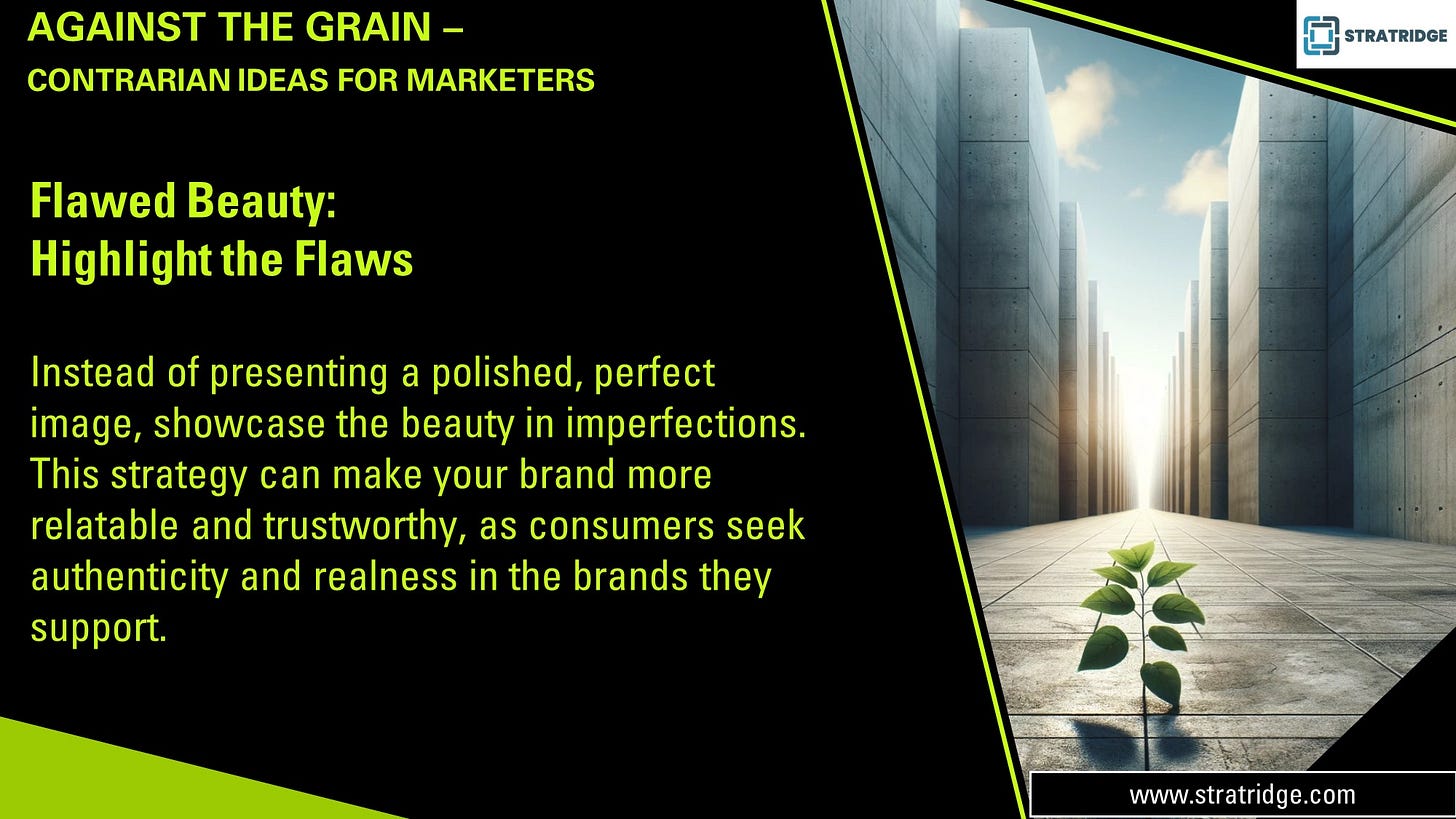Flawed Beauty: Embracing Imperfections in Marketing for Authentic Consumer Connections
In an era dominated by flawless Instagram filters and the relentless pursuit of perfection, a counter-movement is gaining momentum in marketing. This movement, which we might call "Flawed Beauty," advocates for a radical transparency that embraces and highlights the flaws in products and services. This approach challenges traditional marketing norms and reshapes how brands connect with consumers on a fundamental level. Here's how showcasing imperfections can transform a brand's image, enhance consumer trust, and foster deeper relationships in a market saturated with idealized and often unattainable standards.
The Drawbacks of Perfection in Marketing
Traditional marketing has often relied on presenting the most polished version of a product or service. The underlying message has been clear: perfection sells. However, this approach has significant drawbacks. It sets unrealistic expectations, leading to potential dissatisfaction when the actual experience does not match the advertised perfection. Moreover, in a digital age where consumers are constantly bombarded with idealized images, many are becoming skeptical of too-good-to-be-true presentations, leading to a craving for authenticity and transparency in branding.
The Rise of Authenticity
The shift towards authenticity can be traced back to consumer fatigue with traditional advertising tactics and a growing distrust of overly curated brand images. Today's consumers, especially millennials and Gen Z, value honesty and are more likely to support genuine and trustworthy brands. They seek a human connection in their transactions, including an appreciation for any product or service's natural flaws and imperfections. By adopting a "Flawed Beauty" approach, brands can tap into this desire for authenticity, making a compelling case for why their products are not just acceptable but desirable, flaws and all.
Strategic Advantages of Highlighting Imperfections
Building Trust: By openly acknowledging imperfections, brands can foster a sense of trust among consumers. This transparency suggests that the company has nothing to hide, reassuring in an age where corporate honesty is often questioned.
Differentiating the Brand: In markets saturated with similar products, brands that embrace their flaws can stand out. This differentiation is not just about being unique but also about being relatable and real, qualities that can endear a brand to consumers tired of standard sales pitches.
Enhancing Customer Loyalty: Customers who feel they have been treated honestly are likelier to develop a loyal relationship with a brand. Loyalty is further deepened by the emotional connection that can form when a brand aligns with the authenticity consumers value.
Creating a Realistic Customer Experience: By setting realistic expectations, brands can enhance customer satisfaction. When the product or service experience aligns closely with what was advertised, even if it includes some imperfections, customers will likely feel their expectations have been met or exceeded.
Marketing Techniques for Emphasizing Flawed Beauty
Narrative Storytelling: Use the brand's platforms to tell stories that include the challenges and failures behind the product. This narrative should highlight the journey toward improvement and perfection, emphasizing the value of the process.
Customer Reviews and Testimonials: Encourage real customer testimonials that do not shy away from minor criticisms. These reviews can provide a balanced view that new customers will find credible and helpful.
Behind-the-Scenes Content: Share content that shows the production process, including the hurdles and how they are addressed. This transparency can increase consumer appreciation for the product and the brand's commitment to quality.
Highlight the Unique Flaws: If a product has a unique flaw, like a handmade item with distinctive imperfections, highlight these aspects as a feature rather than a bug. This approach can appeal particularly to those who value craftsmanship and uniqueness.
Ethical Considerations and Challenges
While the strategy of embracing flaws can offer numerous benefits, it must be approached ethically. Brands should avoid exploiting consumer trust by artificially creating 'flaws' to appear authentic. Moreover, there needs to be a balance between being honest about flaws and not undermining the perceived quality or value of the product.
The "Flawed Beauty" marketing strategy represents a significant shift towards authenticity and realism in consumer products. This approach meets the evolving expectations of contemporary consumers and builds a brand image rooted in trust and honesty. As the market continues to evolve, those brands that dare to show their imperfections will likely find themselves at the forefront of consumer preference, leading the way with integrity and genuine connections.


